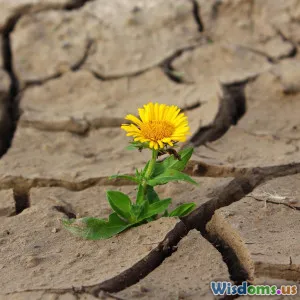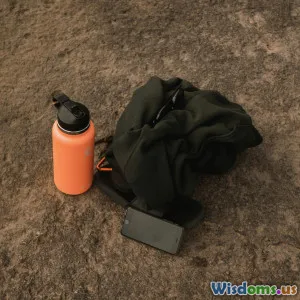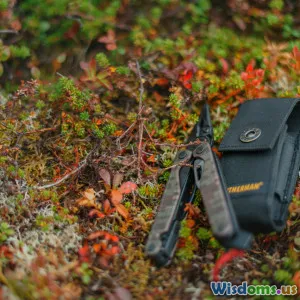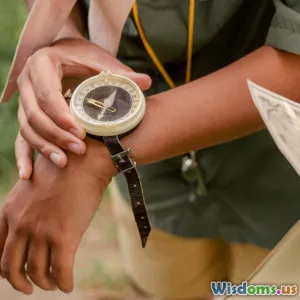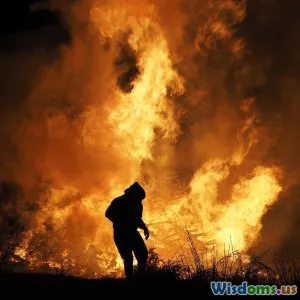
Secrets to Avoiding Heat Stroke on Survival Journeys
9 min read Discover essential strategies to prevent heat stroke during survival journeys with expert tips, real-world insights, and practical advice. (0 Reviews)
Secrets to Avoiding Heat Stroke on Survival Journeys
Introduction: The Invisible Danger of Heat Stroke
Venturing into the wild during scorching conditions can be a test of endurance, resilience, and survival skills. One of the most insidious threats faced by adventurers and survivalists alike is heat stroke. Unlike dehydration or sunburn, heat stroke stealthily impairs your body’s vital regulatory systems, potentially causing irreversible damage. It’s more than just feeling hot or tired; it is a life-threatening emergency.
Heat stroke has claimed casualties throughout history—from desert explorers unable to rehydrate adequately, to hikers trapped in intense sun without shelter. Recognizing this danger and equipping yourself with practical preventions not only saves you from agony but can be the difference between life and death. This article dissects the secrets to avoiding heat stroke, revealing expert advice, scientific data, and real-world insights.
Understanding Heat Stroke: A Primer
Heat stroke occurs when the body's thermoregulatory system fails, and internal body temperature rises above 104°F (40°C). Unlike heat exhaustion—which is common and less severe—heat stroke impairs the brain's function, leading to possible confusion, unconsciousness, or even death if untreated.
According to the Centers for Disease Control and Prevention (CDC), heat stroke accounts for over 600 fatalities annually in the United States alone, disproportionately affecting outdoor workers, athletes, and adventurers.
Types of Heat Stroke
- Classic heat stroke: Develops gradually in high environmental temperatures, often affecting the elderly or those with chronic diseases.
- Exertional heat stroke: Results from intense physical activity in hot conditions, typical for survival journeys or athletic endeavors.
In survival situations, exertional heat stroke is the primary concern, as continuous exertion under the sun accelerates internal heat buildup.
Body: Proven Strategies to Avoid Heat Stroke on Survival Trips
1. Prioritize Hydration: The Lifeblood of Thermoregulation
Dehydration drastically reduces the body’s ability to cool through perspiration. According to a 2018 study published in the "Journal of Thermal Biology," a 2% drop in body weight due to dehydration can impair cognitive and physical performance significantly.
- Water Before Thirst: Don't wait to feel thirsty. Carry sufficient water and sip consistently, aiming for 1 liter every 1-2 hours under moderate exertion. In harsh desert conditions, rates can double.
- Electrolyte Balance: Sweating expels vital electrolytes like sodium and potassium. Consuming electrolyte solutions can prevent hyponatremia—a condition where low sodium levels cause confusion and cramps.
Example: The explorers of the 19th-century Dead Sea expeditions suffered massive heat casualties primarily due to insufficient water and electrolyte replacement.
2. Smart Clothing Choices: Dress to Cool
What you wear directly influences heat retention and sweat evaporation.
- Lightweight, Loose, Light-Colored Clothing: Loose fabrics promote air circulation, aiding heat dissipation. Light colors reflect sunlight.
- UV Protection: Clothing embedding UV-protective materials guards against harmful solar radiation that increases heat stress.
- Moisture-Wicking Fabrics: Synthetic blends designed to wick sweat away keep skin drier and improve evaporation cooling – a major benefit over cotton.
Real-world insight comes from desert survival experts who endorse the use of traditional loose robes and turbans, which shade and ventilate simultaneously.
3. Timing Your Activities Wisely
Nature offers cooler windows; savvy survivors harness these.
- Avoid Peak Heat Hours: The sun’s intensity peaks from 10 AM to 4 PM. Plan strenuous tasks like hiking or building shelters before 10 AM or after 4 PM.
- Rest in Shade: Set or seek shade during hottest periods. This reduces thermal exposure and body temperature buildup.
NASA’s research on workers exposed to heat underscores reduced heat-related illness when work schedules adapt to environmental temperatures.
4. Early Symptom Recognition: Clinical Awareness Saves Lives
Heat stroke doesn’t occur without warning signs. Understanding and quickly acting on symptoms can prevent escalation.
- Initial Warning Signs: Headache, dizziness, nausea, rapid heartbeat, muscle cramps, and excessive sweating.
- Progression Symptoms: Confusion, lack of sweating despite heat, slapdash behavior, seizures, or loss of consciousness.
Carrying a compact symptom checklist or emergency guide can help keep awareness high.
5. Utilizing Cooling Strategies
- Wet Cloth Methods: Applying wet cloths on the neck, wrists, forehead, and behind knees encourages conductive cooling.
- Mist and Fan: Misting skin and fanning accelerates evaporation cooling.
- Cold Water Immersion: Though challenging in survival settings, submerging in cold water is the gold standard treatment in emergencies.
Soldiers deployed in desert climates often carry damp bandanas and portable fans; these simple devices significantly mitigate heat stress.
6. Adjusting Nutrition for Heat Adaptation
Survival nutrition impacts hydration capacity and thermoregulation.
- Light, Frequent Meals: Large meals raise metabolic heat production, worsening heat stress.
- Salty Snacks: Replace lost sodium via salted nuts or jerky, balancing electrolytes.
- Avoid Alcohol and Caffeine: Both act as diuretics, increasing dehydration risk.
7. Pre-Conditioning and Acclimatization
Gradually exposing the body to heat over 7 to 14 days enhances physiological adaptation—improved sweating response, better cardiovascular efficiency, and enhanced fluid balance.
Military and athletic training regimes often build heat acclimatization before deployment or competitions.
8. Equipment and Shelter: Maximizing Protection
- Portable Shade Structures: Lightweight awnings or umbrellas afford crucial respite.
- Survival Hats: Wide-brimmed hats shield face and neck from direct sunlight.
- Reflective Blankets: When resting, reflective materials reduce radiant heat absorption.
These gear choices may seem simple but collectively reduce heat load significantly.
Conclusion: Mastering Heat Resilience Saves Lives
Heat stroke is an often overlooked, yet incredibly dangerous adversary for anyone undertaking survival journeys in hot climates. Understanding its mechanisms, early symptoms, and practical preventative steps empowers adventurers to protect themselves—not by luck, but by knowledge and preparation.
From strategic hydration to smart clothing, and from timing outdoor activities to leveraging cooling techniques, these secrets are your survival toolkit’s backbone. Real-world examples affirm their efficacy; history’s tragic lessons underscore their necessity.
Ultimately, surviving harsh heat isn’t about avoiding the sun entirely but respecting its power and adapting intelligently. With these insights, your next survival adventure can conclude not in tragedy, but in triumph over the merciless challenge of extreme heat.
Stay safe, stay cool, and persevere with knowledge as your guide.
References
- Centers for Disease Control and Prevention, Heat-Related Illness Facts, 2020.
- Journal of Thermal Biology, Impact of Dehydration on Performance, 2018.
- NASA Occupational Heat Exposure Study, 2016.
- Military Training Manuals on Heat Acclimatization.
- Desert Survival Field Reports, 19th Century.
Rate the Post
User Reviews
Popular Posts











